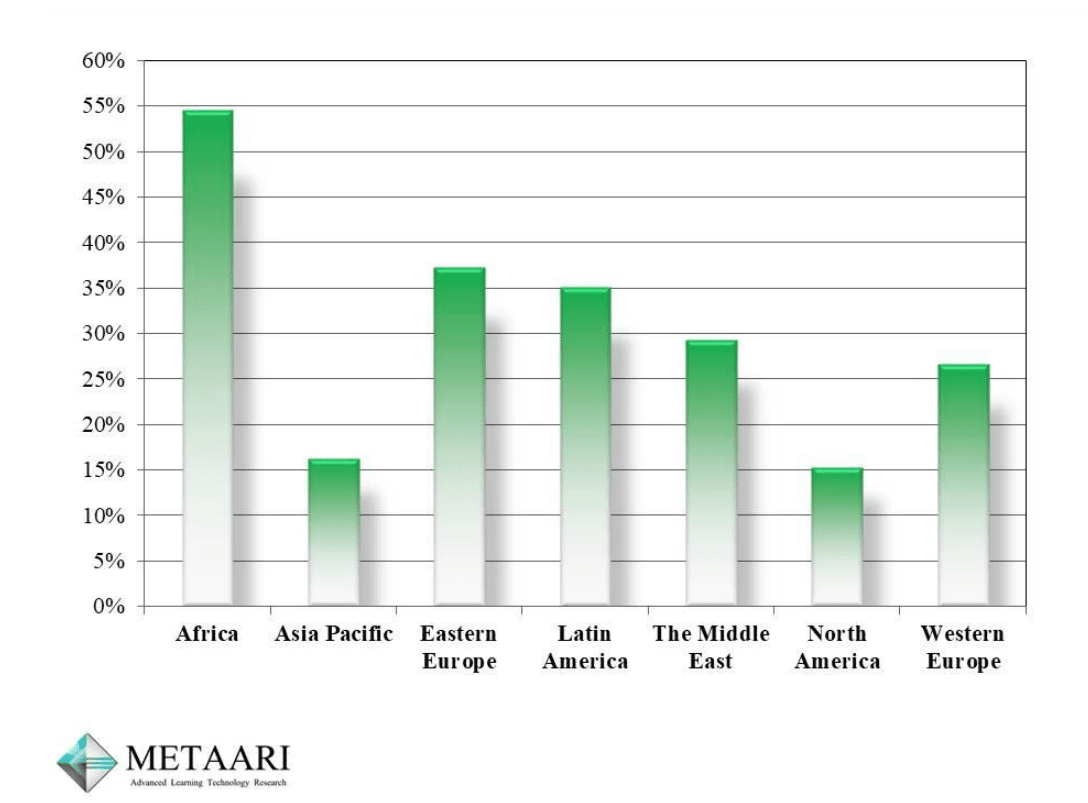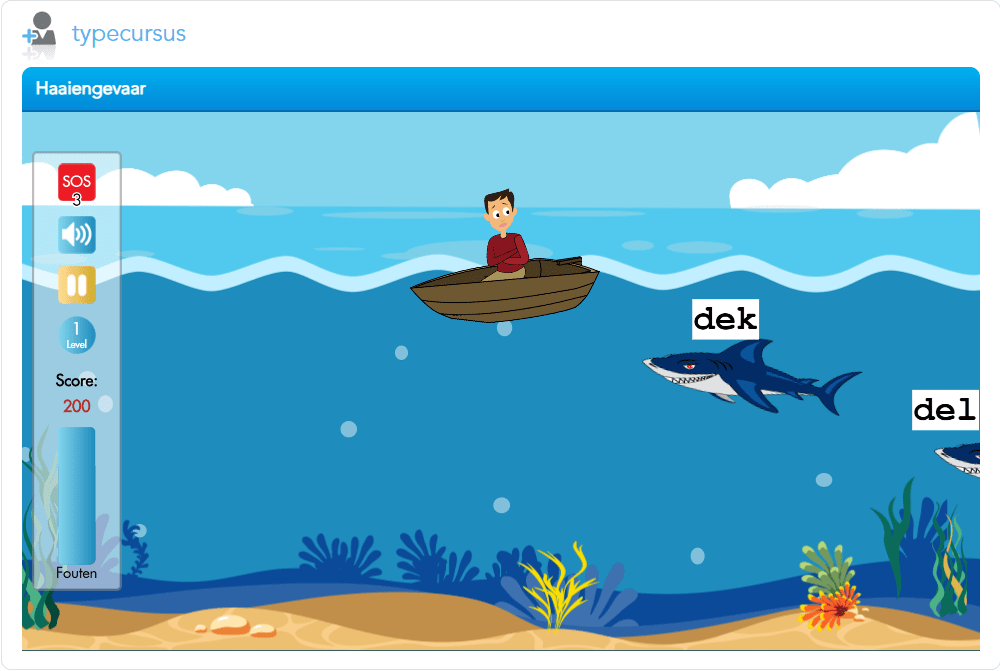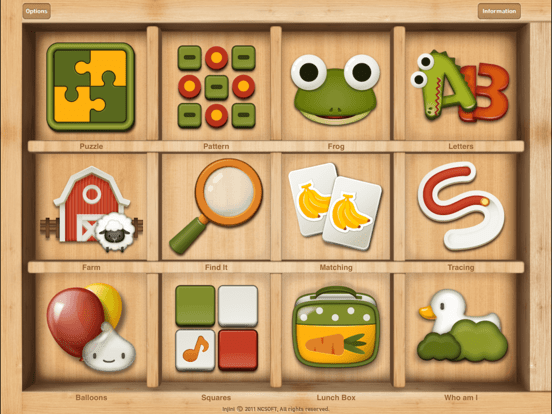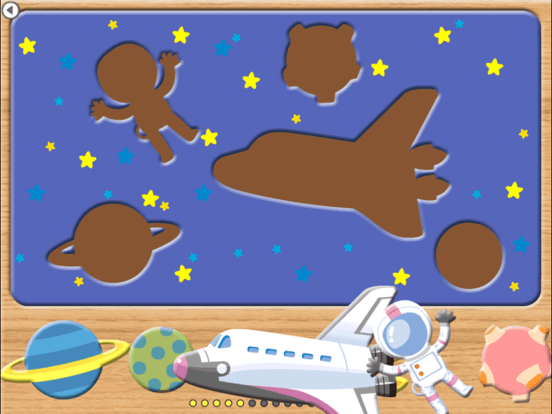The most profitable country for serious games is China, followed by the USA and India. However, by 2022, the United States is expected to regain its number one rank on the top learning games market charts.
How Belitsoft Can Help
We have more than a decade of experience in eLearning and can bring our knowledge to assist you in the following ways:
- Learning game development. If you want to teach something in a fun and engaging way but lack the technical chops to bring your idea to life, we can help.
- Consulting. If there is a problem you want to solve but are not sure how, let us know - we have addressed enough issues to give you advice worth the money you pay for it.
- eLearning platform development. Need a place to host your serious game? We can build you one if none of the existing platforms fit your needs.
Why Enter the Game-Based Learning Market
Serious games are not only effective but also profitable. According to the report by Metaari (a market analytics company), the compound annual growth rate (CAGR) for the game-based eLearning market is 20.2% and the revenue from such products is expected to reach USD 8.1 billion by 2022, up from the USD 3.2 billion in 2017.

Game-based learning market growth by regions
Although the consumers are still the top buyers (preferring mobile learning games for small children and “brain trainers” for adults), the corporations and primary schools also purchase such products quite often. However, businesses appreciate this approach more and more, buying serious games more - the growth rate is 35.7% per year.
Learning games for children are the biggest moneymaker in the niche (growth rate of 21.6% and the revenues expected to triple by 2022), followed by brain trainers and language learning games. However, the learning games using virtual and augmented reality (VR and AR respectively) show the best CAGR - a whopping 47.9%.
Interestingly enough, South Africa experiences the fastest growth of the game-based learning market with CAGR of 51.1%, followed by Bangladesh at 49.2%, Kenya at 48.8%, Myanmar (Burma) at 46.4%, and Nigeria at 44.1%.

Countries with the fastest growing game-based learning market.
All-in-all, learning games is a serious business that is becoming more popular and more profitable.
Success Stories
There are a number of examples of successful game-based learning startups. They combine the favorable market conditions with interesting approaches to teaching and profit as a result.
Extraas
Extraas is a game-based platform focused on teaching mathematics and Dutch to the high school students.
The purpose of this system is to prepare students for the exams and improve their overall skills and knowledge in a fun and engaging way. This is done by using a number of serious games and gamification options like points and badges.
Extraas has launched in early 2020 but has already gained a serious userbase who praise it for being effective and convenient. The average rating is 9.6 out of 10.
See the Extraas case study in our portfolio to learn more about the development process.
Ticken
Ticken is an award-winning touch-typing course.

Typing game in Ticken
Ticken allows users to increase their typing speed up to 140 characters per minute over the course of 30 lessons that take 15 hours in total. It makes use of gamification (through points and leaderboards) and game-based learning as well. There are seven typing games that encourage players to test their skills in a fun environment.

Ticken typing game
Ticken has become hugely successful, gaining over 100,000 users and stellar reviews with the average rating of 8.6 out of 10.
Read more about how we helped our customer create this application in our portfolio showcase.
TET
TET is an online driving theory course that allows students to quickly prepare for the exams and enjoy it.
Most of the training is done through mock tests that are similar to the real thing. In addition, negotiating intersections can be learned through a fun mini-game.
TET employs gamification techniques as well, including multiple progress bars and live feedback.
The driving course has proven to be 8 times more effective than classroom-based training or similar DVD-based courses. As a result, more than 22,000 people have already purchased and completed TET. The average rating for it is 8.2 out of 10.
Injini
Injini is a collection of learning games for small children suffering from various cognitive, language, and fine motor impairments.

Injinni. Source
It contains a series of puzzles that each has 9 difficulty levels. All the games are designed in a way that makes them fun yet challenging enough for their target audience. The end goal is the development of motor and logic skills like matching, sequencing, patterns, and tracking moving objects.

The game suite is popular, having a 4.3 out of 5 rating on AppStore. The reviewers praise its efficiency while noting its steep price.
Kamibot
Kamibot is a toy that teaches kids programming in a fun way.
The system has hardware and software elements. The first one is a small robot that has a sensor array and a Bluetooth connector. The second is an Arduino-like environment that allows users to program the robot.
Kamibot can be remotely controlled via a smartphone or a tablet. And to make it more fun, the exterior can be changed at will through various papercraft models available on the developers’ website.
Kamibot was successfully funded on Kickstarter and has since expanded to include Korean and Japanese language versions.
Dragonbox Elements
Dragonbox Elements is a mobile game for children that “secretly teaches geometry”.
The player of age 9 and up needs to build an army of geometrical shapes and save Euclid’s island from the evil dragon Osgard. All of this is done through solving puzzles and recreating proofs of Euclid’s theorems. The game supports multiple saves to allow several users to play on the same device.
Dragonbox Elements turned out to be quite successful, with an average rating of 4.4 on AppStore and 4.6 on PlayMarket.
Pacific
Pacific is an online serious game that aims to improve the leadership capabilities of the players.
The game is built around a narrative: a group of people on the way to complete a humanitarian mission find themselves on an uninhabited island and have to build a hot air balloon to fly away. It contains 6 modules that cover everything from understanding your own strength and weaknesses to effectively delegating and motivating others.
Pacific targets corporate customers and counts Fujitsu, MAN, Bombardier, and LG among its customers.
Time Machine VR
Time Machine VR is basically an underwater “Jurassic Park” in virtual reality.
As part of the game’s plot, the player is sent back in time to discover the origin of the deadly virus ravaging the Earth. To do that, the user must find and scan various underwater creatures like mosasaurs and megalodons, learning about them in the process.
Time Machine VR is designed to educate about the sea creatures of the Jurassic period which are less known than their land-dwelling counterparts.
The reviewers of this game praise its graphics and attention to detail as well as a relaxed learning experience it provides. However, some people feel sick while playing it and others feel that it is too boring to be worth the price.
How to Launch a Game-Based Learning Startup
So you’ve decided to bring your idea to life. This is how we’d advise you to go about it based on the recommendations from the founder of Startups.com.
Research everything.
Any successful startup provides an efficient solution to an existing problem. So should yours. Extraas founder, for example, saw that the costs for private tutors were too high and delivered an application to address this.
Your idea might change as you work on it, which is fine - Instagram used to be based on the check-in feature, after all. The idea is to focus on the problem you are trying to solve and find the best way to do it. So the exact problem and the available solutions to it are the first things you need to research.
Other topics include:
- Demand
- Specific target audience
- Expert opinions
- Other ways to solve the same problem
2. Develop a concept.
The concept is what you would tell a person asking “what does your app do?”. Netflix, for example, could be summed up in the following sentence: “Imagine you could open your Web browser and instantly access thousands of movies and TV shows whenever you wanted them, on any device.”
You can further define your concept in a presentation or an expanded description that would include all the cool features that your users will experience. The main thing is to set the users’ expectations and give them something to look forward to.
3. Build an MVP.
This is the part where technical expertise comes into play. We have an abundance of it, so we’ll dwell on this step for a bit longer.
The concept of a Minimum Viable Product (MVP) states that you need to release the first version of your software with only the most important features. Selecting them, though, is not an easy task. Thankfully, we’ve already written an article on the topic, check it out. Other features
Now you need to choose the technology to base your educational game on. We will cover three popular options.
Phaser.js
EXTRAAS Games made with Phaser
Phaser is a free open-source framework for creating 2D games that would run in browsers on mobile and desktop devices. It is lightweight, works very well in browsers, and provides good performance. If you need to make multiple games, Phaser can be used to create a custom game engine. This decreases the overall time-to-market and costs.
However, this framework is limited to 2D browser games and doesn’t allow you to step out of these rigid boundaries.
Overall, Phaser is a good choice if you need something simple and inexpensive that gets the job done.
Unity
Adam - a short film made in Unity.
Unity is a full-fledged engine that is used for all kinds of games including popular titles like Battletech and Wasteland 2. It is extremely popular among both small companies and giants like Microsoft, Sony, and Sega.
Unity is free for individuals that make under USD 100k with it over the last 12 months. Business licenses start from USD 399 per year per license.
There are many advantages that Unity has. It is flexible enough to create games for any platforms (including Virtual reality and weaker PCs), it is free for smaller companies, and has an asset store full of both free and paid elements that you can use to speed up the development process. Its graphics capabilities as just as good as its competitors’.
Unreal Engine
A Boy and His Kite - a short film made in Unreal Engine.
Unreal Engine is very popular among high-end game developers. It was the foundation for the (of course) Unreal Tournament, Splinter Cell, XCOM, and many other popular titles. It also finds use in architecture, advertising, cinematography, and other areas where interactivity and high-quality visuals are in demand.
This engine has a lot of presets and tools that make it easier to achieve top-notch graphics, including material editor and post-processing features. This is in part because Unreal is built mostly for 3D games, although 2D games are definitely possible to make with it.
Unreal doesn’t have any licensing fees. However, if you use it to develop a commercial product, you will have to pay a 5% royalty to the developers as long as your game is making money.
Another “hidden cost” associated with Unreal is the hourly rate of the developers. Programmers who know C++ (the programming language associated with this engine) command a higher price than, for example, the C# coders who work with Unity. These costs would be passed on to the customer - you.
4. Acquire customers.
Once you have an MVP you will be able to attract people to actually play your learning game. At this stage, the most important thing is not to earn money but to test your ideas and get real feedback. This can be used to improve your product and get ahead of the competition.
Customer acquisition is a completely different topic that people spend their whole careers learning about. Fortunately, there is an abundance of information on the topic. This article would be a good way to start.
5. Keep providing value.
There is a reason customers come to you. What does your product do that makes it attractive?
You will surely know the answer by the time this stage comes up. Your goal should be to expand on the value you provide and either give your users more of the same or bring extra features that improve your offering (e.g. the posts feature on YouTube).
This can mean improved visuals and performance of your game, more exercises, or more subjects covered.
6. Reevaluate/Reinvent.
Once you have your product up and running, monitor the customer feedback and business metrics. Is your game really as effective as you wanted it to be? Do your players like it? Does it pay you enough to keep supporting it?
If the honest answer to any of these questions is “no”, you might want to rethink your approach and pivot in a different direction or even start over. For example, Slack (the popular chat for coworkers and distributed teams) grew out from a game called Glitch.
Rate this article
Recommended posts
Our Clients' Feedback


















.jpg)
.jpg)
![Artificial Intelligence in Education [Ultimate Knowledge Hub]](/uploads/images/blog/posts/previews/image_163177848252-image(600x250-crop).jpg)
.jpg)
.jpg)
.jpg)
.jpg)
.jpg)
.jpg)
.jpg)
.jpg)
![How to Create a Language Learning App [The Ultimate Guide!]](/uploads/images/blog/posts/previews/image_155352483594-image(600x250-crop).png)
.jpg)
.jpg)
.jpg)
.jpg)
![Integrate Your CRM with LMS to Increase Sales [Start now!]](/uploads/images/blog/posts/previews/image_162030700147-image(600x250-crop).jpg)
.jpg)
.jpg)
.jpg)
.jpg)
.jpg)
.png)
.jpg)
.jpg)
.jpg)
.png)
.jpg)
.jpg)
.jpg)
.jpg)
.jpg)
.jpg)
.jpg)
.jpg)
.jpg)
.jpg)
.jpg)
.jpg)
.jpg)
.jpg)
.jpg)
.jpg)
.jpg)
.jpg)
.jpg)
.jpg)
.jpg)
.jpg)
.jpg)
.jpg)
.jpg)
.jpg)
.jpg)
.jpg)
.png)
.png)
.png)
















We have been working for over 10 years and they have become our long-term technology partner. Any software development, programming, or design needs we have had, Belitsoft company has always been able to handle this for us.
Founder from ZensAI (Microsoft)/ formerly Elearningforce